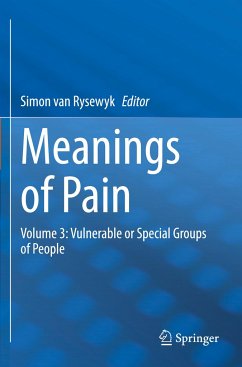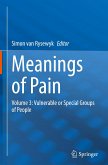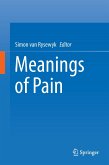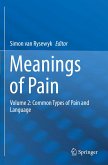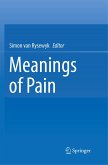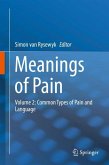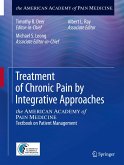This book, the third and final volume in the Meaning of Pain series, describes what pain means to people with pain in "vulnerable" groups, and how meaning changes pain - and them - over time.
Immediate pain warns of harm or injury to the person with pain. If pain persists over time, more complex meanings can become interwoven with this primitive meaning of threat. These cognitive meanings include thoughts and anxiety about the adverse consequences of pain. Such meanings can nourish existential sufferings, which are more about the person than the pain, such as loss, loneliness, or despair.
Although chronic pain can affect anyone, there are some groups of people for whom particular clinical support and understanding is urgently needed. This applies to "vulnerable" or "special" groups of people, and to the question of what pain means to them. These groups include children, women, older adults, veterans, addicts, people with mental health problems, homeless people, or people in rural or indigenous communities. Several chapters in the book focus on the lived experience of pain in vulnerable adults, including black older adults in the US, rural Nigerians, US veterans, and adults with acquired brain injury. The question of what pain experience could mean in the defenceless fetus, neonate, pre-term baby, and child, is examined in depth across three contributions.
This book series aspires to create a vocabulary on the "meanings of pain" and a clinical framework with which to use it. It is hoped that the series stimulates self-reflection about the role of meaning in optimal pain management.
Meanings of Pain is intended for people with pain, family members or caregivers of people with pain, clinicians, researchers, advocates, and policy makers. Volume I was published in 2016; Volume II in 2019.
Immediate pain warns of harm or injury to the person with pain. If pain persists over time, more complex meanings can become interwoven with this primitive meaning of threat. These cognitive meanings include thoughts and anxiety about the adverse consequences of pain. Such meanings can nourish existential sufferings, which are more about the person than the pain, such as loss, loneliness, or despair.
Although chronic pain can affect anyone, there are some groups of people for whom particular clinical support and understanding is urgently needed. This applies to "vulnerable" or "special" groups of people, and to the question of what pain means to them. These groups include children, women, older adults, veterans, addicts, people with mental health problems, homeless people, or people in rural or indigenous communities. Several chapters in the book focus on the lived experience of pain in vulnerable adults, including black older adults in the US, rural Nigerians, US veterans, and adults with acquired brain injury. The question of what pain experience could mean in the defenceless fetus, neonate, pre-term baby, and child, is examined in depth across three contributions.
This book series aspires to create a vocabulary on the "meanings of pain" and a clinical framework with which to use it. It is hoped that the series stimulates self-reflection about the role of meaning in optimal pain management.
Meanings of Pain is intended for people with pain, family members or caregivers of people with pain, clinicians, researchers, advocates, and policy makers. Volume I was published in 2016; Volume II in 2019.

